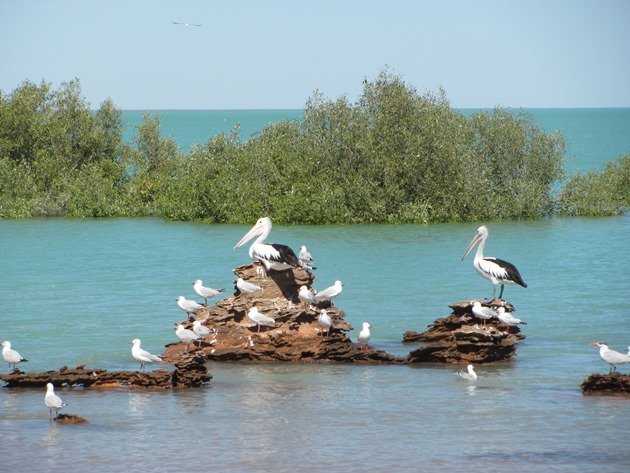
If this post goes up, then it means we are still away from civilisation and without computer, internet, electricity and running water. It means we are hopefully finding some new birds for the year list off the beaten track somewhere north of Broome….can’t be too specific can I!!??
When we have had the very big tides in Broome during June there are a few beaches worth checking out for the remaining migratory shorebirds and the resident shorebirds alongside other water birds. When we visited the shores of Roebuck Bay in early June there were some lovely flocks of Red-necked Avocets and Black-winged Stilt standing high up on the beach below the cliffs, but they were not the only birds present. The rocks that were surrounded by the sea at high tide were great roosts for Australian Pelicans, Silver Gulls and Caspian Terns.
Australian Pelican, Silver Gulls and Caspian Tern
It didn’t look particularly comfortable where the Australian Pelicans had perched themselves on the rocks surrounded by Silver Gulls and the restless Black-winged Stilt flying by.
Australian Pelicans, Silver Gulls and Black-winged Stilt in flight
As the tide dropped the Black-winged Stilt settled themselves on the wet sand close to some other Australian Pelicans and gives you some idea of the relative size of the two species.
Australian Pelicans, Silver Gulls and Black-winged Stilt
At high tide there is no reef exposed and the Eastern Reef Egret walked the edge of the tide looking for food. Although Broome has both the grey and white morph of the Eastern Reef Egret you are more likely to come across the grey morph in Roebuck Bay and the white morph further north on the Coconut Wells reef.
Eastern Reef Egret
The Eastern Reef Egret then moved to roost among the Silver Gulls on the remaining exposed rocks.
Silver Gulls and Eastern Reef Egret
June is a good time of year to observe Gull-billed Terns roosting along the shoreline and their black-caps show beautifully at this this time of year. The Gull-billed Terns are separated into two subspecies-the “macros tarsus” shown here and the Asian subspecies “affinis” that migrate to the north. They can often be found surrounded by Silver Gulls.
Gull-billed Terns “macro tarsus” and Silver Gulls
It is also worth checking the beaches close to the port area of Broome for shorebirds and on very high tides you may be lucky enough to find a Beach Stone-curlew. When there is no beach left they will happily roost on an outlying rock in the sea. It is also worth checking the Willie Creek area for Beach Stone-curlew.
Beach Stone-curlew having a stretch
Beach Stone-curlew
Even though most migratory shorebirds are in the northern hemisphere there are still 14 Whimbrel roosting in the port area.
14 Whimbrel
The most exciting time of year is coming up for us with the imminent egg laying, hatching and possibly fledging of Pied Oystercatcher chicks. It will be interesting to watch the pair that are the most successful parents along the Broome coastline once again this year. Last year they successfully raised three chicks to be independant and leave to find a non-breeding flock until they find a mate. They have been feeding up at Gantheaume Point over the past few months and will have some “egg-sitting” time ahead!
Pied Oystercatchers
I will keep you updated on Pied Oystercatcher breeding in Broome once again this year and hopefully there’s a good outcome once again in 2015!
Update….we are back in civilisation, but I have only got as far as updating the year list so far! I can also confirm that there are several Pied Oystercatcher eggs currently being sat on!


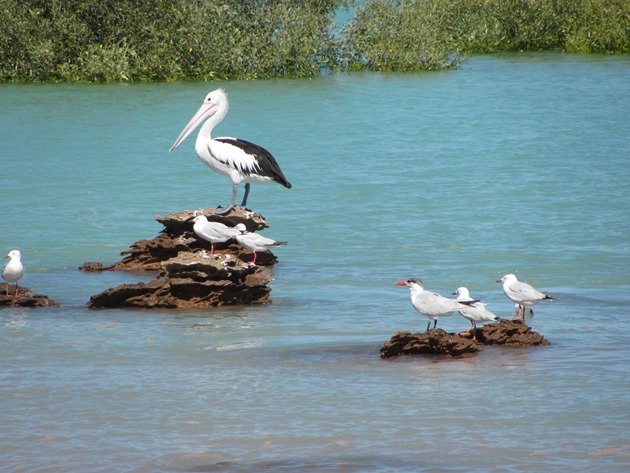
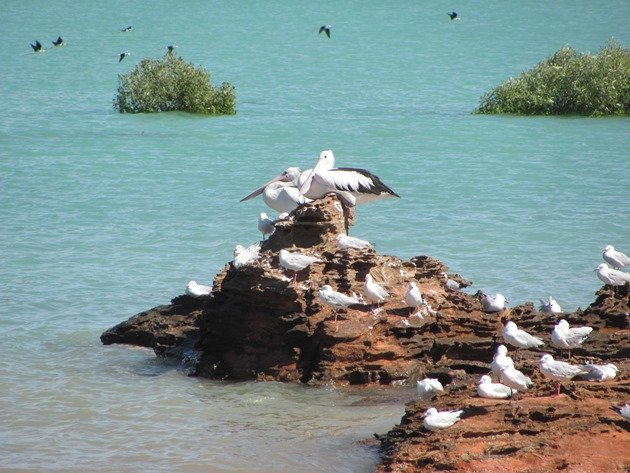
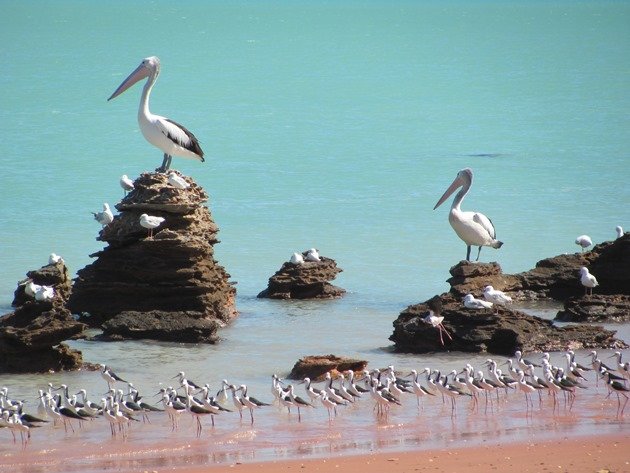
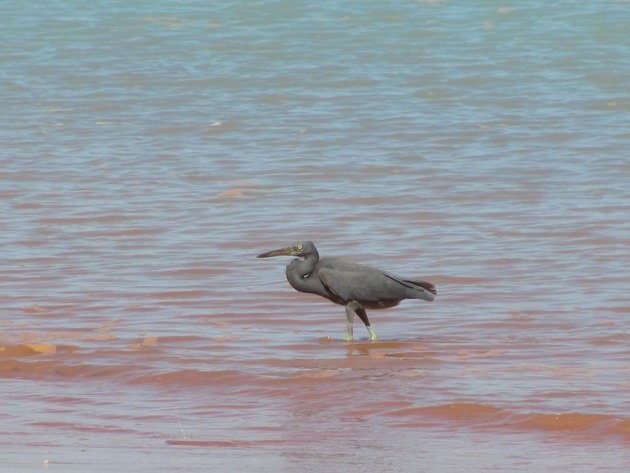
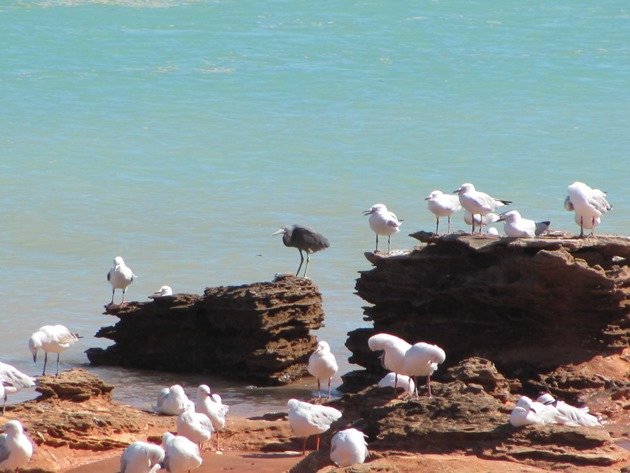
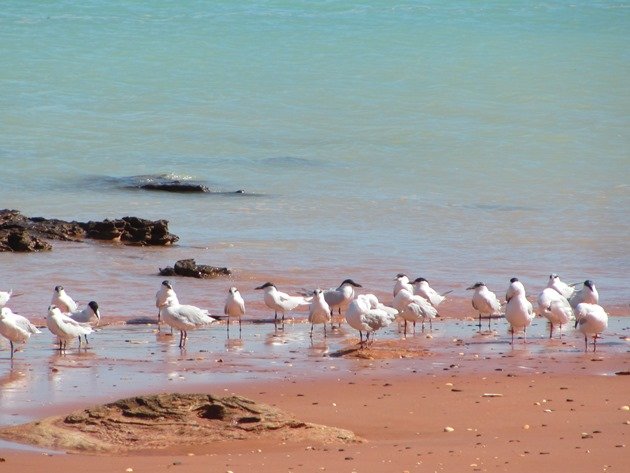
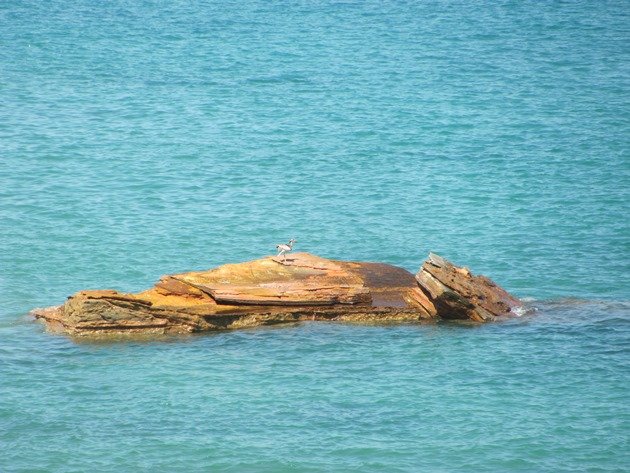
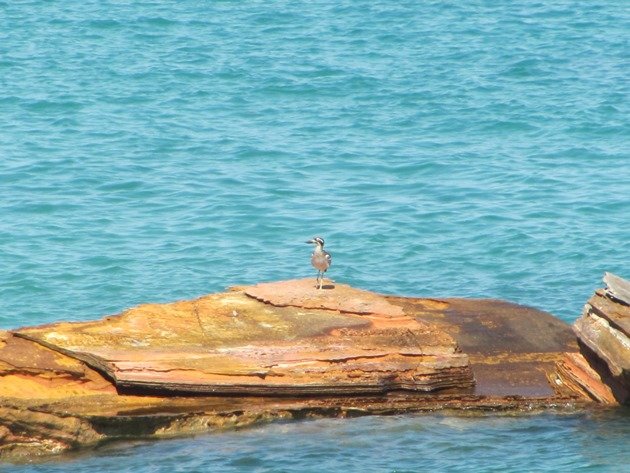
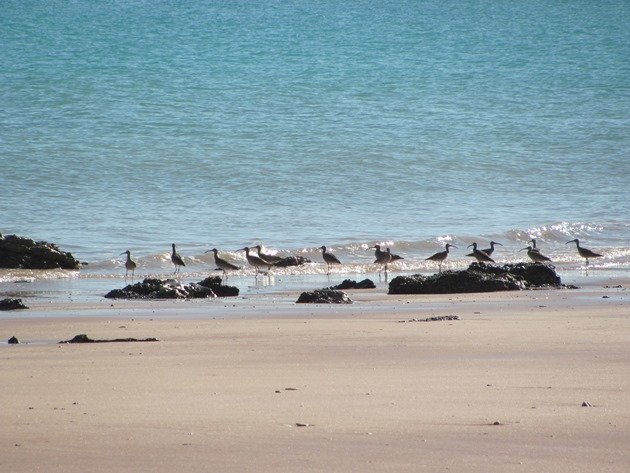
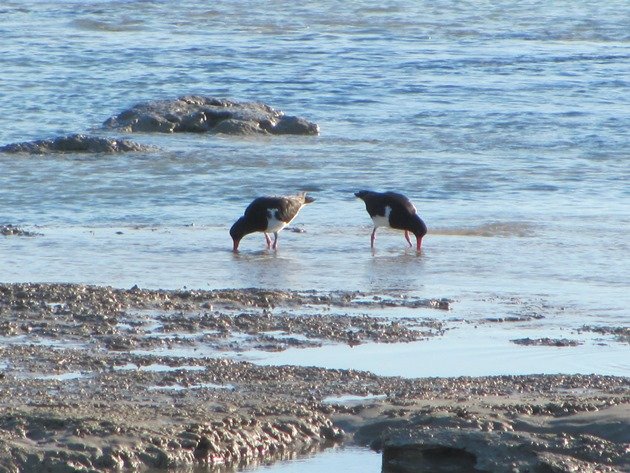











Beach birding looks pretty nice in Australia. We still have some Whimbrels around in Costa Rica too along with some other shorebirds. For me, one of the strangest things is seeing large flocks of Black Terns the past couple of months. It’s like they decided to just stay on vacation instead of bothering to fly back north.
It is always interesting to see what is along the coast in the “off-season” for migratory shorebirds isn’t it!?